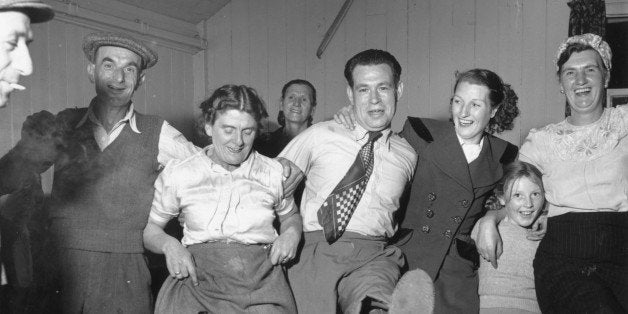
Everyone from scientists to self-help gurus have long sought the secret to happiness, contributing a series of theories, formulas and advice that range from the outlandish to the practical.
One popular formula, positive psychologist Barbara Fredrickson's "golden ratio," was recently revived in a TIME post, but is there any truth to it?
The theory posits that we must have three positive emotions for every one negative emotion in order to thrive -- this ratio is the definitive tipping point for happiness and flourishing, the Positivity author concluded. And, by this calculation, Fredrickson's research has suggested that less than 20 percent of people are thriving.
Fredrickson and colleague Marcial Losada originally outlined their "positivity calculus" theory -- drawn from fluid dynamics, a subfield of physics -- in a 2005 paper published in the journal American Psychologist. In it, they suggest that flourishing is associated with positivity ratios of about 2.9 and that a more common ratio of 2-to-1 could help people "get by," but not thrive.
The 3-to-1 ratio applies to overall happiness, but needs within particular scenarios look quite different, according to their paradigm. For example, successful relationships require a 5-to-1 ratio of positive to negative experiences in order to thrive in the long term.
But before you start keeping tally of your positive and negative experiences (or deem yourself "unflourishing" if your positive-negative ratio is 2:1 or worse) consider: A paper published last year in American Psychologist, suggests that Fredrickson's positivity ratio may be not have much of a real basis in psychological science. For one, Fredrickson and Losada never explain how an advanced mathematical tool -- a formula -- can be applied to human emotion, the paper's authors argue.
"We find no theoretical or empirical justification for the use of differential equations drawn from fluid dynamics, a subfield of physics, to describe changes in human emotions over time," wrote the authors. "The lack of relevance of these equations and their incorrect application lead us to conclude that Fredrickson and Losada’s claim to have demonstrated the existence of a critical minimum positivity ratio of 2.9013 is entirely unfounded."
Regardless we can safely assume that bringing more positive experiences into our lives and learning to better appreciate good moments can bolster our happiness.
"People don't recognize the hidden power of everyday experiences," psychologist Rick Hanson, author of Hardwiring Happiness, told The Huffington Post last year. "We're surrounded by opportunities -- 10 seconds here or 20 seconds there -- to just register [positive] experiences and learn from them. People don't do that when they could."
